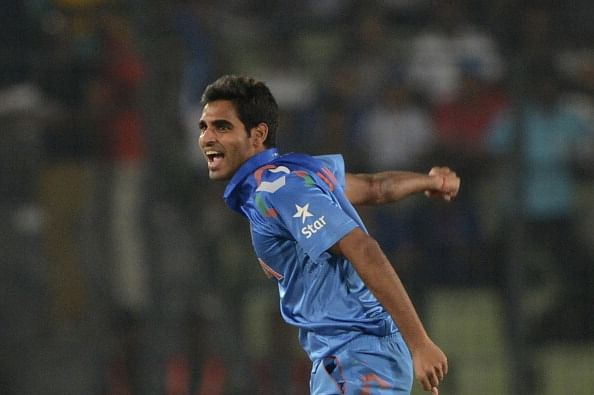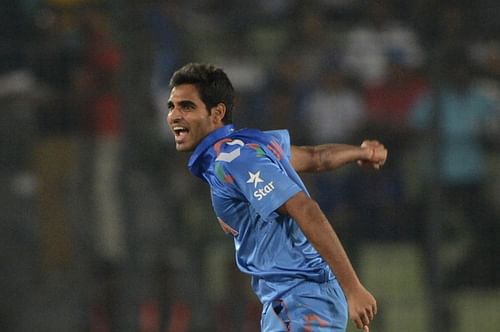
What lies ahead for Indian bowlers?

In recent years, it has become increasingly tough to be a fast bowler in cricket. The introduction of the new rules – only 2 players outside the circle in Powerplay and 4 in non-Powerplay overs as against 3 and 5 previously – has made it even more difficult.
With the advent of the Indian Premier League and the high scores it offers, it is even tougher to be an Indian fast bowler, as the crowd demands a similar run-feast in international cricket, as well. To make the matches more exciting, the Board of Control for Cricket in India (BCCI), year after year, churns out flat tracks, much to the dismay of the fast bowlers, who have no choice but to see themselves being punished day in, day out.
The Board drew flak:
The Board was in for much flak during the India-Australia ODI series last year, where the bowlers watched in disbelief as scores in excess of 350 in almost every match became the norm. The series not only lowered the self-esteem of the young and talented bowlers like Bhuvneshwar Kumar or Mohammed Shami but also led to a series of losses in bowler-friendly conditions in South Africa or New Zealand, where our bowlers were unable to take the full quota of wickets or put the opposition under pressure.
Questions were being asked on the BCCI’s role in guiding these players, besides raising doubts as to whether the defending champions would be any good in the 2015 Cricket World Cup in Australia and New Zealand, where, more often than not, the bowlers win you games.
The turning point:
IPL 7 was in many ways a watershed moment for Indian cricket, as it silenced all those suspicions. The likes of Bhuvneshwar, Mohit Sharma, Rishi Dhawan and Ishwar Pandey not only impressed one and all with their length and accuracy but also outshone world-class bowlers like Dale Steyn and Mitchell Johnson.
Bhuvi, bowling alongside the world’s best bowler Steyn for Hyderabad Sunrisers, with his top notch bowling both upfront and at the death picked up 20 wickets at an impressive economy rate of 6.65, in comparison to the South African’s 11 wickets at 7.69. It earned him praise from Steyn himself, who was confident that Bhuvneshwar will be an asset to the Indian team.
Mohit, who cleverly mixed the yorkers with the slow bouncers, thanked the team think-tank for his success. The winner of the Purple Cap credited MS Dhoni for the wickets, stating that the captain didn’t stop him from expressing himself irrespective of what the outcome turned out to be. Although he conceded at 8.4, by picking up 23 wickets, he was instrumental in guiding Chennai Super Kings to the play-offs.
Umesh Yadav, the Knight Rider, learnt from bowling coach Wasim Akrams’ experience, who said he had advised the youngster to stay calm under pressure. Gautam Gambhir, the captain of the Kolkata-based franchise, knew well that, despite the batsmen calling the shots in T20, it is the bowlers who win games, and hence played with 5 frontline bowlers throughout the tournament. This confidence, Umesh states, helped him to deliver at crucial stages and, in turn, lead the team to IPL glory.
Ishwar, though, thinks the BCCI’s decision to prepare bowler-friendly pitches helped. "Generally the pitches in India support the spinners, but this time the BCCI had prepared pitches that helped the fast bowlers a bit more than it normally does,” stated the Super King from Chennai.
Missed Chances:
One person, however, who will rue out the missed chances will be Shami, the Delhi Daredevils quickie who picked up only 7 wickets at an economy of 8.38. His performance proves how important a mentor is for a bowler; Daredevils had no other world-class bowler to guide him, either on or off the field.
Looking Ahead:
The IPL, thus, despite the criticism and controversy, has done a world of good for the Indian bowlers. They will have learnt a trick or two from the international stars, and it augurs well for the upcoming tours of England and Australia, which will be an acid test for the younger lot.
Also, it has taught them to handle the pressure, which was evident in the India-Bangladesh ODI series, where, despite having only 105 to defend, the bowlers skittled out the opposition for 58, with Stuart Binny picking up 6-4 in 4.4 overs. With the impressive performances from Sandeep Sharma and Rishi, the IPL has ensured a strong bench strength for further competitions.
Joe Dawes, the bowling coach of the national team, however, has a word of caution for the bowlers: he urged them to not over-bowl and instead focus more on the quality than the quantity. He states managing the fitness is an important issue, and the players should take proper rest.
All said and done, India have a good balance of bowlers who are capable of troubling any opposition. In Umesh and Shami, they have bowlers who can hit the deck hard and derail the oppositions. In Bhuvi, the team has a swing bowler who can spearhead the Indian attack.
The talents have been showcased, and the chances have been taken. Now it is up to the BCCI to ensure this bunch of players don’t have the same fate as a Munaf Patel or an Irfan Pathan.